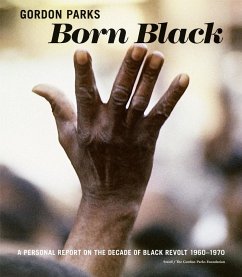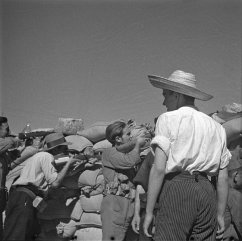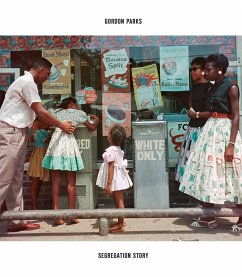
A Discussion about the Role of Photography in the African American Post-War Civil Rights Movement

PAYBACK Punkte
0 °P sammeln!
Essay from the year 2010 in the subject Art - Photography and Film, University of Westminster, language: English, abstract: Photography has played various roles in the African American Post-War Civil Rights Movement. Besides its extraordinary coverage of the contemporary Jazz scene and the historical documentation of the segregated South (Kasher, 1996), it had in particular a remarkable political function.Photography and television have given the Civil Rights fighters a voice which could not be ignored in Post-War America; by showing the struggle in all its unjust cruelty they confronted the n...
Essay from the year 2010 in the subject Art - Photography and Film, University of Westminster, language: English, abstract: Photography has played various roles in the African American Post-War Civil Rights Movement. Besides its extraordinary coverage of the contemporary Jazz scene and the historical documentation of the segregated South (Kasher, 1996), it had in particular a remarkable political function.Photography and television have given the Civil Rights fighters a voice which could not be ignored in Post-War America; by showing the struggle in all its unjust cruelty they confronted the national and international community with the shocking reality. People got motivated to express their sympathy for the demonstrators and the number of Movement supporters grew rapidly. Thereby, the most significant stream of followers arose only after the news media had shown images of unexpected outrage, making the relationship obvious (Streitmatter, 2008). In general, media do not only havea significant impact on public opinion but also contribute greatly to the success of humanitarian organisations. Often their influence even exceeds the possibilities available to politicians. This arises from the news media being the only source of information consumers get about developments further afield, making the success of civil rights movements highly dependent on their image given by press and television (International Council on Human Rights Policy, 2002).As one of these movements, the struggle for desegregation in America is the most thoroughly documented social conflict to date (Kasher, 1996). The tabloid Life, which can be seen as the national newspaper at the time (Shepherd, 1997), was reaching even more people than the new medium of television. For this reason, the magazine's understanding of the events, which was expressed by its presentation of images of the iconography of war - uniformed troopers, weaponed assaults, the wounded, state funerals - was spread widely and contributed to the change in public opinion (Kasher, 1996).Whereas the claim for the media being the cause of a basic change in politics and society often suffers from oversimplification (International Council on Human Rights Policy, 2002), there are many facts indicating it in the case of America's Post-War desegregation.This can be explained by three major events, the subsequent news coverage of each, and political shifts in the course of the Civil Rights Movement: the Birmingham campaign in May 1963; the March on Washington in August 1963; and "Bloody Sunday", the first Selma to Montgomery March in March 1965.













